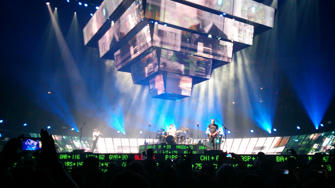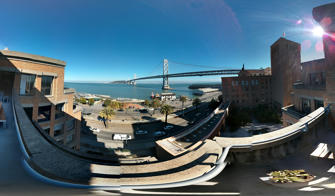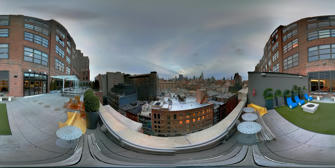(Note: This article originally appears on the American Bar Association's Section of Litigation Technology for the Litigator website as "The Magic of Reverse Image Searches".)
Intellectual-property litigators are now using online tools and research databases more and more to assist in efficiently advising their clients. While many lawyers use Google for finding information, not many know that they can use Google to do a “reverse image search” to assist their clients in preliminary consultation regarding similarity of such visual intellectual property (trademarks and copyrights) to other already existing images on the Internet. With this free technology, instead of inputting search terms to find images online, users may upload images or pull images from other websites and see what other online images are similar.
How Does It Work?
There are several reverse image search engines available with their own search algorithms, unique layouts, and target demographics. Examples are TinEye, Byo Image Search, GazoPa, RevIMG, IM2GPS, Idée, Google Images, and imgSeek, and SnapTell,which was acquired by Amazon in 2009. Without a doubt, however, the most popular options are Google Images and TinEye. Even though Google Images arrived on the reverse image search scene rather late (debuting only last year), the strength of its database of images has quickly made it the search engine of choice for reverse searches.
There are several reverse image search engines available with their own search algorithms, unique layouts, and target demographics. Examples are TinEye, Byo Image Search, GazoPa, RevIMG, IM2GPS, Idée, Google Images, and imgSeek, and SnapTell,which was acquired by Amazon in 2009. Without a doubt, however, the most popular options are Google Images and TinEye. Even though Google Images arrived on the reverse image search scene rather late (debuting only last year), the strength of its database of images has quickly made it the search engine of choice for reverse searches.
With this reverse image search technology, a user can take an image on his or her computer in any number of formats (for example, JPEG, PNG, TIFF, BMP) and upload it to one of the reverse image search engines. Almost instantaneously, the search engines will scour the Internet and find any images that are either exactly the same or very similar. Just as in a regular image search, the search engines show a list of images and the websites where the images are located. Google Images also allows users to search by dragging and dropping images into the main search bar, using an image’s URL location, or by right-clicking on browser web pages with a downloaded Chrome or Firefox extension.
Similarity of Visual Images
In trademarks, there are several factors that would show infringement by way of confusion (for example, similar sounding words, placement of products, and channels of trade); however, the worlds of copyright and trademark overlap on one single imperative when it comes to infringement: similarity. Copyright and trademark owners are most likely to litigate over this factor because the visual representation of a mark (or work) is one of the most salient characteristics of intellectual property to the general public.
In trademarks, there are several factors that would show infringement by way of confusion (for example, similar sounding words, placement of products, and channels of trade); however, the worlds of copyright and trademark overlap on one single imperative when it comes to infringement: similarity. Copyright and trademark owners are most likely to litigate over this factor because the visual representation of a mark (or work) is one of the most salient characteristics of intellectual property to the general public.
So, for example, before an attorney commissions an arguably expensive Thomson CompuMark research report on the similarity of a proposed trademark logo for her client’s new supermarket chain, she could take the proposed image and do her own research beforehand. By doing this, she prepares herself for the worst and could highlight any marks that the proposed logo might look substantially similar to. This aids her client in avoiding a lengthy trademark research bill, saving time, and most of all, avoiding a costly application rejection by the U.S. Patent and Trademark Office.
Litigators must also search for any derivative works that might have used visual cues from their client’s intellectual property. In this regard, reverse image searches provide information on which images look strikingly similar and which may have similar styles.
Step-by-Step Instructions
There are four ways to conduct a reverse image search using Google Images: (1) copying and pasting a web address (uniform resource locator, or URL), (2) uploading an image, (3) dragging an image onto the search screen, or (4) right-clicking on images online (after installing a Chrome or Firefox browser extension).
There are four ways to conduct a reverse image search using Google Images: (1) copying and pasting a web address (uniform resource locator, or URL), (2) uploading an image, (3) dragging an image onto the search screen, or (4) right-clicking on images online (after installing a Chrome or Firefox browser extension).
Here are the directions for uploading images the traditional way:
- Direct your browser to http://images.google.com.
- Click on the camera icon on the right-hand side of the search bar.
- There you will find two options: “Paste image URL” and “Upload an image.” Select “Upload an image.”
- Here you can either drag an image file from your computer to the search bar or find it using the “Choose File” function. I chose the latter.
- Hit “Open.”
Test 1: “Fake Nike” (drawing I made on my PC)


Here, to show how powerful reverse image search is, I used the popular mark for Nike. Google displayed a total of five images that were the exact Nike “swoosh” I mimicked in my drawing—and a few more that look very similar as well:

This test shows the incredible visual accuracy of Google’s reverse image search. Attorneys can just as easily upload images sent to them by their clients for these searches—without even having the final draft intended for commercial use. As demonstrated directly below, a photographed image works just as well.
Test 2: “Real Pinkberry” (photo I took earlier this year)


In the photo I took for this test, the lighting conditions were not perfect, the company’s logo was not completely in view (showing only “pinkber”), and the subject was not even perfectly straight. However, this posed no problem to Google. It not only returned online images that were similar to the one I had uploaded but also guessed that the product displayed belonged to “Pinkberry”:

Attorneys do not need to be well versed in any photo editing or illustrator software. In fact, to conduct a reverse image search, an attorney could just as easily take a photo of a preliminary mock-up with his or her smart phone. Attorneys who have the Google Goggles app can take and submit images instantaneously without having to go through a personal computer for transferring files.
Conclusion
Although reverse image searching is no Thomson CompuMark trademark research report and by no means the most reliable method of preventing or monitoring for trademark and copyright infringement, reverse image searches provide quick and free information about images similar to the one searched for. Certainly, attorneys with fewer resources at hand and those unsure of whether or not to embark on certain litigation or prosecution matters can add a layer of information to protect their clients’ intellectual-property interests.
Although reverse image searching is no Thomson CompuMark trademark research report and by no means the most reliable method of preventing or monitoring for trademark and copyright infringement, reverse image searches provide quick and free information about images similar to the one searched for. Certainly, attorneys with fewer resources at hand and those unsure of whether or not to embark on certain litigation or prosecution matters can add a layer of information to protect their clients’ intellectual-property interests.









